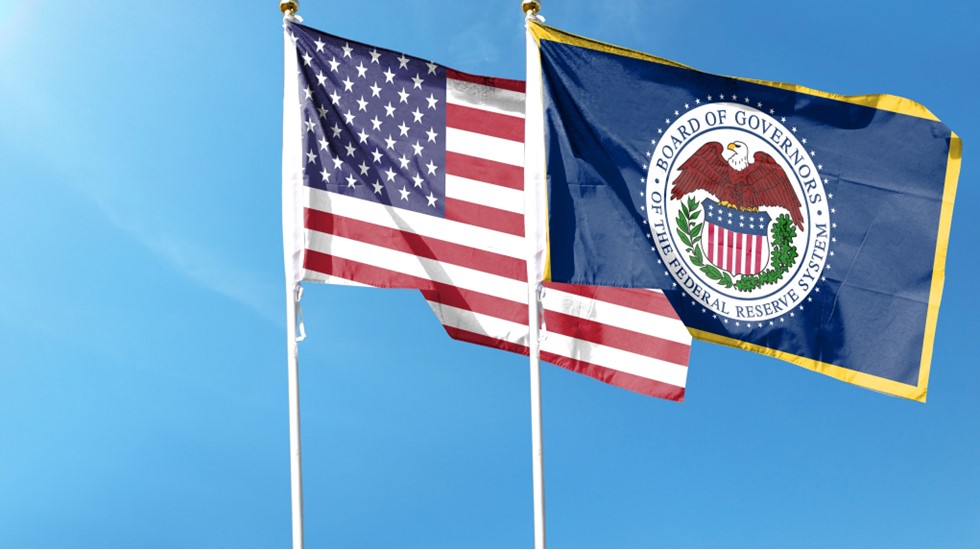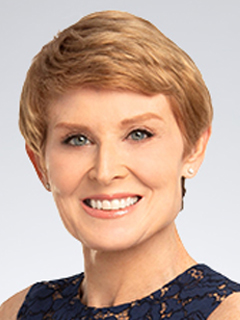Fed cuts rates cautiously
Dissents in two directions.

September 12, 2025
The Federal Open Market Committee (FOMC) - the policy setting arm of the Federal Reserve - is expected to cut short-term interest rates by one quarter point at its September 16-17 meeting. The statement following the meeting will highlight the need to cut to shore up weakness in the labor market, while staying mindful that inflation could move higher. The statement following the meeting is expected to acknowledge the risks to both employment and inflation.
Chairman Jay Powell will signal a willingness to go further on rate cuts during the press conference following the meeting. The starting point on rates is that they are still restrictive, although broader credit market conditions started to ease well ahead of the possibility of the Fed easing.
It is scheduled to release its quarterly Summary of Economic Projections (SEP) at the meeting as well. We expect that to show that most of the Fed is targeting three rate cuts this year, starting in September.
We could see a modest decline in what the Fed considers its neutral policy rate, which would leave current policy more restrictive than the Fed previously had estimated. That could justify a quarter-point rate cut, although even there, debate will flare.
Credit market conditions eased – equity markets hit new highs and credit spreads narrowed – well before a rate cut by the Fed was imminent.
The decision to cut a quarter point will not be unanimous. There are those who have expressed concerns about not cutting enough and cutting too much. The last time we saw conflicting dissents at a Fed meeting was in September 2019, during the aftershock of the trade war with China.
That underscores how tough trade wars are to gage amidst curbs in immigration. The latter has lowered the breakeven number of jobs needed each month to keep the unemployment rate steady.
Governors Chris Waller and Michelle Bowman are likely to dissent in favor of a more aggressive half percent cut. Waller has already signaled as much. He will be joined by Stephan Miran, who has been nominated to temporarily fill the seat left vacant by former Governor Adriana Krugler.
Miran is currently Chairman of the Council of Economic Advisors for the president. He has agreed to temporarily leave his post at the White House to finish off Kugler’s term, which expires in January 2026. He is slated to be voted into his position on Monday and sworn into the office prior to the meeting on Tuesday. He is expected to join the dissenters, although it will likely be for an even more aggressive cut in rates.
His forecasts could be added to the SEP. The Fed has been forecasting a mild bout of stagflation - a toxic mix of escalating inflation and rising unemployment and weaker growth - since March 2025. He is expected to push for more rate cuts during his limited tenure.
Votes for more aggressive cuts could be countered by a dissent against a cut. Kansas City Fed President Jeff Schmid and Cleveland Fed President Beth Hammack have voiced a preference for the Fed to stand pat in September. Chicago Fed president Austan Goolsbee has echoed that sentiment but with less conviction than the other two.
Those Fed leaders are worried that the recent bump in inflation, with such close proximity to the pandemic inflation, could become entrenched. The weakening in the labor market is worrisome, but not as much at first glance if the breakeven on payrolls has fallen dramatically.
Further complicating matters is that the Fed was late to raise rates to combat the pandemic inflation. We are still dealing with it more than four years after it started; it is rising again. That has dealt a blow to the Fed’s credibility. Another mistake on inflation could be self fulfilling, as it would normalize escalating inflation.
Historically, dissents are not made in a vacuum. They often reflect the views of others who cannot vote at any given meeting. Schmid could take on that role as he is a voting member and could vote to dissent in the other direction, to hold rates unchanged. It is unclear that Goolsbee, who is a voting member at this meeting, would join him.
Another major change at the meeting could be whether the appeals courts take up the administration’s plea to rule in favor of the president’s firing of Governor Lisa Cook. She won her first battle to hold her position with the courts as the objections the administration cited for her firing occurred prior to her tenure at the Fed and were unproven. “Cause” is typically due to malfeasance or dereliction of duties while in a position, although her fate as Fed governor may still be in the balance.
The Supreme Court provided a carveout to protect Chairman Powell from an arbitrary firing by the administration due to its unique structure. It is a quasi-private institution which is self-funded and not contingent upon taxpayer dollars. That was part of the design to keep the central bank independent of political interference.
It is unclear how markets will react to the dissonance arising within the Fed. The desire for rate cuts is high, but not at the expense of a persistent bout of inflation. History is littered with central banks that bowed to pressure to cut rates to shore up employment and economic growth before the battle against inflation was won. Those battles were always lost, as a flare in inflation rapidly eroded any boost to employment that occurred.
Historically, central banks that have failed to derail inflation have been punished by bond investors. Efforts to ease backfired as a surge in inflation quickly eroded any gains in employment due to rate cuts. Bond yields backed up and credit conditions tightened, even as the central bank continued to cut short-term rates. We are not yet there yet; it is a place worth avoiding.
Central banks that have failed to derail inflation have been punished by bond investors.

Diane Swonk
KPMG Chief Economist
Explore more

Fed split over rate cut decision: No signals on a September cut
The challenge for the Fed would be a deterioration in employment.

KPMG Economics
A source for unbiased economic intelligence to help improve strategic decision-making.

Birds of a feather no longer flock together
The Fed splits over timing & size of rate cuts.
Subscribe to insights from KPMG Economics
KPMG Economics distributes a wide selection of insight and analysis to help businesses make informed decisions.
Meet our team
